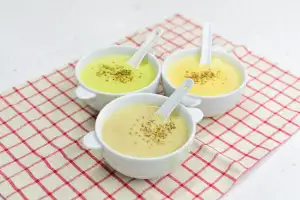Unraveling the Secrets of Corned Beef: A Delectable Beef Delicacy Explained

- Origins and History of Corned Beef
- Ingredients and Preparation of Corned Beef
- Different Cuts of Beef Used for Corned Beef
- Cooking Methods for Corned Beef
- Popular Corned Beef Dishes and Recipes
- Health Benefits and Nutritional Value of Corned Beef
- Tips for Buying and Storing Corned Beef
- Serving Suggestions and Pairings for Corned Beef
Corned beef is a delectable beef delicacy that has captured the hearts and taste buds of people around the world. With its rich flavor and tender texture, corned beef offers a truly satisfying dining experience. Whether enjoyed in a sandwich, as part of a hearty meal, or incorporated into various recipes, this savory meat never fails to impress. In this article, we will unravel the secrets of corned beef, exploring its origins, preparation methods, cooking techniques, popular dishes, health benefits, and more. Join us on this culinary journey as we delve into the wonderful world of corned beef and discover why it continues to be a beloved favorite among food enthusiasts everywhere.
Origins and History of Corned Beef
Corned beef has a rich history that dates back centuries. Its origins can be traced to ancient times when people discovered the art of preserving meat using salt. The term "corned" refers to the use of large grains of salt, known as "corns," which were used to cure and preserve the beef.
The practice of corning beef became popular in Europe during the Middle Ages, particularly in Ireland and England. It was a way for people to preserve meat for long periods without refrigeration. Salt was rubbed onto the beef, allowing it to draw out moisture and inhibit bacterial growth.
During the 17th century, Irish immigrants brought their love for corned beef to America. In fact, corned beef became synonymous with Irish cuisine, especially during St. Patrick's Day celebrations. The tradition of serving corned beef and cabbage on this holiday is believed to have originated in America rather than Ireland.
In the United States, corned beef gained popularity among immigrants due to its affordability and long shelf life. It became a staple food for many working-class families, particularly in urban areas where fresh meat was not readily available.
Today, corned beef is enjoyed by people all over the world as a delicious and versatile ingredient. Its history is a testament to the ingenuity of our ancestors who found ways to preserve meat and create a culinary delight that continues to be cherished today.
Ingredients and Preparation of Corned Beef
Corned beef is made using a few simple ingredients and a traditional curing process. The main ingredient, of course, is beef, typically from the brisket cut. The beef is then cured in a brine solution made with salt, water, sugar, and various spices such as peppercorns, mustard seeds, and bay leaves.
To prepare corned beef, the beef is first trimmed of excess fat and then submerged in the brine solution for several days. This allows the flavors to penetrate the meat and gives it that distinctive salty and tangy taste. The curing process also helps to tenderize the beef, making it juicy and flavorful.
After the curing period is complete, the corned beef can be cooked using various methods such as boiling or slow cooking. Some recipes even call for braising or roasting to enhance the flavor and texture of the meat.
The preparation of corned beef requires patience and attention to detail. It's important to follow proper food safety guidelines when handling raw meat and ensure that all equipment used is clean and sanitized.
By taking the time to properly prepare corned beef, you can unlock its delicious potential and enjoy a truly delectable dish.
Different Cuts of Beef Used for Corned Beef
When it comes to corned beef, the choice of beef cut plays a crucial role in determining the final texture and flavor. The most commonly used cuts for corned beef are brisket and round. Brisket, which comes from the chest area of the cow, is known for its rich marbling and tenderness. This makes it ideal for slow cooking methods like braising or boiling, resulting in succulent and flavorful corned beef.
On the other hand, round cuts, which come from the rear leg of the cow, are leaner and have less fat content compared to brisket. While this makes them a healthier option, they can be slightly tougher. However, with proper cooking techniques such as slow cooking or pressure cooking, round cuts can still yield tender and delicious corned beef.
Some variations may also include using other cuts like chuck or plate, depending on personal preference or regional traditions. These cuts may offer different textures and flavors to the final dish. Ultimately, the choice of cut depends on individual taste preferences and desired outcome.
Regardless of the cut chosen, what remains constant is that corned beef is a versatile dish that can be enjoyed in various forms – from sandwiches to stews to hash. So whether you prefer a melt-in-your-mouth texture or a leaner option, there's a cut of beef that will suit your palate when it comes to making mouthwatering corned beef dishes.
Cooking Methods for Corned Beef
There are several cooking methods that can be used to prepare corned beef, each resulting in a unique texture and flavor. The most common method is boiling, which involves simmering the beef in water or broth until it is tender. This method is simple and straightforward, but it can take a few hours for the meat to become fully cooked.
Another popular cooking method is slow cooking or braising. This involves placing the corned beef in a slow cooker or Dutch oven with vegetables and spices, then allowing it to cook slowly over low heat for several hours. This method results in incredibly tender and flavorful meat.
For those who prefer a more hands-on approach, roasting is another option. By placing the corned beef on a rack in a roasting pan and cooking it in the oven at a moderate temperature, the meat develops a crispy exterior while remaining moist and tender on the inside.
Lastly, some people choose to grill their corned beef. This method adds a smoky flavor to the meat and creates beautiful grill marks on the surface. It's important to cook the beef slowly over indirect heat to ensure it cooks evenly without becoming tough.
No matter which cooking method you choose, it's essential to allow the corned beef to rest before slicing it. This allows the juices to redistribute throughout the meat, resulting in a more succulent final product. Whether you prefer traditional boiled corned beef or want to experiment with different cooking techniques, there are plenty of options available for enjoying this delectable delicacy.
Popular Corned Beef Dishes and Recipes
Corned beef is a versatile ingredient that can be used in a variety of delicious dishes. One popular dish is corned beef and cabbage, a classic Irish recipe. Simply boil the corned beef with cabbage, carrots, and potatoes for a hearty meal.
Another favorite is the Reuben sandwich, made with thinly sliced corned beef, sauerkraut, Swiss cheese, and Russian dressing on rye bread. This sandwich is grilled until the cheese melts and the flavors meld together.
For a twist on traditional tacos, try making corned beef tacos. Shred the cooked corned beef and serve it in warm tortillas with salsa, avocado slices, and cilantro. The combination of flavors is sure to impress.
If you're looking for something different, consider making corned beef hash. Dice cooked corned beef and sauté it with onions and potatoes until crispy. Serve it with fried eggs for a satisfying breakfast or brunch option.
Lastly, don't forget about corned beef sandwiches. Layer thinly sliced corned beef on your choice of bread with mustard or mayonnaise for a quick and tasty lunch option.
These popular dishes showcase the versatility of corned beef and highlight its rich flavor profile. Whether you prefer traditional recipes or want to experiment with new flavors, there are endless possibilities when it comes to cooking with corned beef.
Health Benefits and Nutritional Value of Corned Beef
Corned beef may not be the first thing that comes to mind when thinking about healthy food options, but it does offer some surprising health benefits. While it is true that corned beef is high in sodium and saturated fat, it also provides essential nutrients such as protein, iron, and B vitamins. Protein is important for muscle growth and repair, while iron helps to transport oxygen throughout the body. B vitamins are essential for energy production and maintaining a healthy nervous system. However, it is important to consume corned beef in moderation due to its high sodium content.
Tips for Buying and Storing Corned Beef
When buying corned beef, it's important to choose a good quality cut. Look for well-marbled meat with a bright red color. Avoid any cuts that appear gray or have a strong odor. Additionally, check the expiration date to ensure freshness.
When storing corned beef, keep it refrigerated at all times. If unopened, it can last for several weeks in the refrigerator. Once opened, wrap it tightly in plastic wrap or place it in an airtight container to prevent spoilage. It's best to consume within a few days of opening.
If you have leftovers, store them in the refrigerator and use within 3-4 days. Corned beef can also be frozen for longer storage. Wrap it tightly in freezer-safe packaging and label it with the date before placing it in the freezer.
Remember to thaw frozen corned beef in the refrigerator overnight before cooking or reheating. And always follow proper food safety guidelines to ensure the best quality and taste when enjoying this delectable beef delicacy.
Serving Suggestions and Pairings for Corned Beef
Corned beef is a versatile dish that can be enjoyed in various ways. Here are some serving suggestions and pairings to enhance your corned beef experience.
1. Classic Reuben Sandwich: Layer thinly sliced corned beef, sauerkraut, Swiss cheese, and Thousand Island dressing on rye bread. Grill until the cheese melts for a mouthwatering sandwich.
2. Corned Beef Hash: Dice leftover corned beef and sauté it with potatoes, onions, and bell peppers. Serve with a fried egg on top for a hearty breakfast or brunch option.
3. Irish Colcannon: Combine mashed potatoes with cooked cabbage or kale and mix in diced corned beef. This traditional Irish dish is comforting and delicious.
4. Corned Beef Tacos: Fill soft tortillas with shredded corned beef, pickled cabbage slaw, and a dollop of spicy mayo for a fusion twist on tacos.
5. Corned Beef and Cabbage Soup: Simmer corned beef with cabbage, carrots, onions, and potatoes in a flavorful broth for a comforting soup that's perfect for chilly days.
Pair these dishes with classic sides like mustard, horseradish sauce, or pickles to complement the rich flavors of the corned beef. Don't forget to serve it alongside freshly baked bread or rolls to complete the meal.
Whether you choose to enjoy it in sandwiches, soups, or traditional Irish recipes, corned beef is sure to satisfy your taste buds with its savory goodness. Experiment with different serving suggestions and pairings to discover your favorite way to savor this delectable delicacy!
In conclusion, corned beef is a delectable beef delicacy that has a rich history and a wide range of culinary possibilities. Whether you enjoy it in traditional dishes like corned beef and cabbage or explore new recipes, the savory flavors and tender texture of corned beef are sure to delight your taste buds. So why not give this flavorful meat a try? Unravel the secrets of corned beef and embark on a culinary adventure that will leave you craving for more. Enjoy the savory delights of corned beef and savor every bite!
Published: 01. 12. 2023
Category: Food



